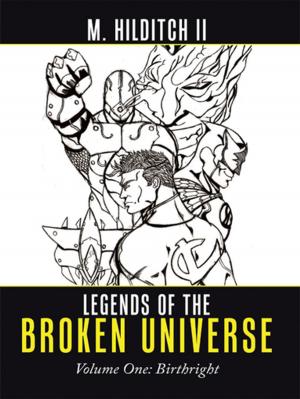| Author: | Nosayaba Evbuomwan PhD | ISBN: | 9781546222842 |
| Publisher: | AuthorHouse | Publication: | January 13, 2018 |
| Imprint: | AuthorHouse | Language: | English |
| Author: | Nosayaba Evbuomwan PhD |
| ISBN: | 9781546222842 |
| Publisher: | AuthorHouse |
| Publication: | January 13, 2018 |
| Imprint: | AuthorHouse |
| Language: | English |
This book uses Psalm 133 as a launching pad for espousing the importance and benefits of unity in the body of Christ. Unity as a subject is constantly discussed in the church, but the practical demonstration is generally ignored. The first two chapters attempt an exposition on Psalm 133. The metaphors, that is, the precious ointment (anointing oil) and the dew of Hermon used by David to describe the goodness and pleasantness of brethren dwelling together in unity, are extensively elucidated. Further chapters in the book in addition to discussing barriers to unity adopt a prescriptive approach in enunciating the rationale for unity in the body of Christ. Practical steps on how we might achieve or at least advance the cause of Christ as we seek to walk in unity is discussed within the context of a local church, denomination, and the church at large. The book in the final chapters sets out the benefits of unity while challenging the church to do all she can about this very important subject. It is my prayer that as you read this book, apart from learning new truths, you will be encouraged, emboldened, and challenged to champion and promote unity in the body of Christ.
This book uses Psalm 133 as a launching pad for espousing the importance and benefits of unity in the body of Christ. Unity as a subject is constantly discussed in the church, but the practical demonstration is generally ignored. The first two chapters attempt an exposition on Psalm 133. The metaphors, that is, the precious ointment (anointing oil) and the dew of Hermon used by David to describe the goodness and pleasantness of brethren dwelling together in unity, are extensively elucidated. Further chapters in the book in addition to discussing barriers to unity adopt a prescriptive approach in enunciating the rationale for unity in the body of Christ. Practical steps on how we might achieve or at least advance the cause of Christ as we seek to walk in unity is discussed within the context of a local church, denomination, and the church at large. The book in the final chapters sets out the benefits of unity while challenging the church to do all she can about this very important subject. It is my prayer that as you read this book, apart from learning new truths, you will be encouraged, emboldened, and challenged to champion and promote unity in the body of Christ.















